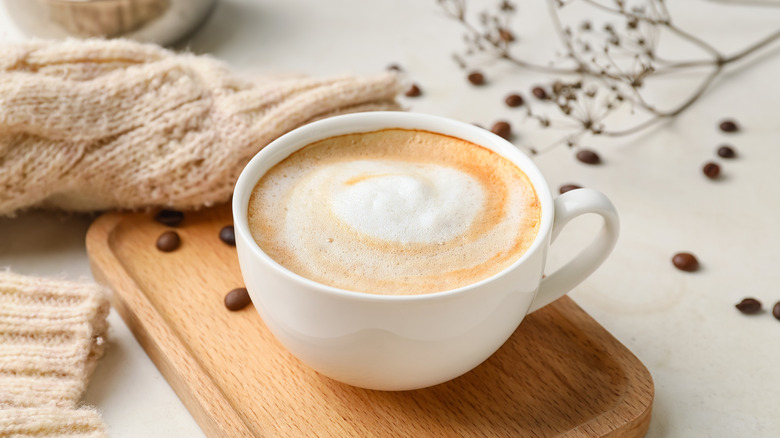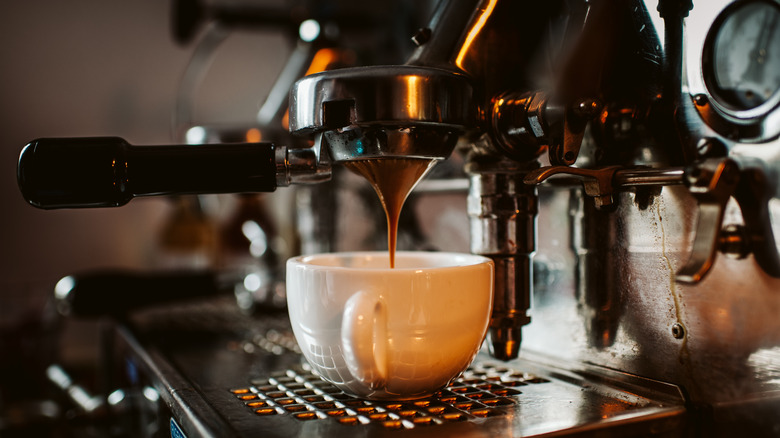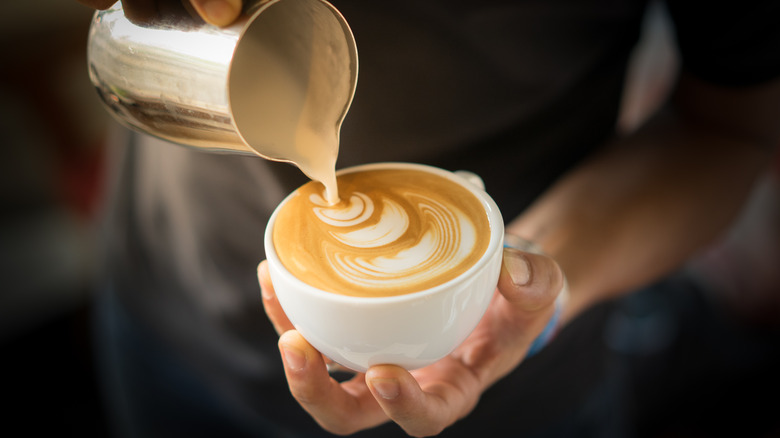What Is The Difference Between A Latte And A Cappuccino?
Have you ever stood at the counter of your favorite coffee shop and wondered what the differences are between the myriad of espresso drinks on the menu? Besides milk options and flavorings, there is, of course, the choice of latte or cappuccino, two seemingly similar coffee beverages. Though the two use the same ingredients (espresso and heated, frothed milk), there are key differences, most notably in the milk foam distribution and amount of foam. Cappuccinos are known for their foamy nature, boasting even layers of espresso, steamed milk, and foam, compared to lattes with less foam and more steamed milk incorporated in.
With lattes, there is a higher ratio of milk to espresso (about two-thirds milk to one-third espresso, to be precise), resulting in a significantly milkier, creamier texture and taste. To make a latte, milk is steamed and frothed, then poured carefully at an angle (to reserve the milk's foam) in a cup atop espresso. At the very end of the pour, a thin layer of foamy milk (referred to as microfoam) is dolloped on top or swirled in patterns to make latte art. On the other hand, when you order a cappuccino, your barista will froth the milk a bit longer to achieve more airiness and larger foam bubbles. They'll then pour a one-to-one ratio of steamed milk and foam over the espresso in even, thick layers. The resulting cappuccino will be relatively smaller than a latte, more espresso-forward, and markedly frothier with every sip.
Origins of the two espresso drinks
While it seems like there's a coffee shop around every street corner these days, it's important to know the origins of your favorite espresso drinks. You may guess that both the latte and cappuccino were derived from cafes in Italy, and you'd be correct — sort of. Espresso, which became increasingly popular in the 1900s with the invention of the espresso machine, is distinctly part of Italian culture and cuisine. However, it turns out the first cappuccino-like beverage was found in Vienna, Austria, where espresso was enjoyed with a topping of whipped cream.
Today, cappuccinos are enjoyed throughout Italy with breakfast. It's said that lattes were only created for tourists visiting Italy who couldn't stomach the bitterness of bold espresso drinks like cappuccinos. A greater ratio of steamed milk was added to appeal to those like the American palette, but still, it might be quite rare to find lattes offered in cafes in Italy. Domestically, other than the espresso drinks you'd find in Italian cafes, espresso beverages like the latte were proliferated and made increasingly popular (not to mention larger and sweeter) in U.S. coffee shops in the '80s and '90s (we're looking at you, Starbucks).
How to make lattes and cappuccinos at home
Once you know the important distinctions between lattes and cappuccinos, you'll know how to order each drink the next time you're at a coffee shop (just ask for a cappuccino when in Italy, though). But what about making these drinks from the comfort of your own home? Luckily, it's possible, and you don't need a ton of fancy equipment. If you do have an espresso machine, complete with a milk steamer, you'll be on your way to becoming a serious coffee aficionado. However, you can also make espresso in an Aeropress, steam your milk on the stovetop, then froth it using a blender, French press, hand-held milk frother, or whisk.
Once you've narrowed down your equipment, you can make a latte by adding two ounces of espresso to your cup, along with any flavorings or sweeteners (think: lavender syrup and honey), then pour in half a cup of steamed milk, carefully depositing the remaining thin layer of foam on top. If a cappuccino is your drink of choice, foam the milk a bit longer and pour in equal parts espresso, steamed milk, and foam. Sometimes, a spoon can be a helpful tool in reserving the foam as you pour the hot milk. Whatever your technique, consider using clear glass to showcase those beautifully stacked, even layers. Note that cappuccinos are usually enjoyed as they are (no syrups required, and not iced) to enjoy the prominent espresso flavors and foam.


